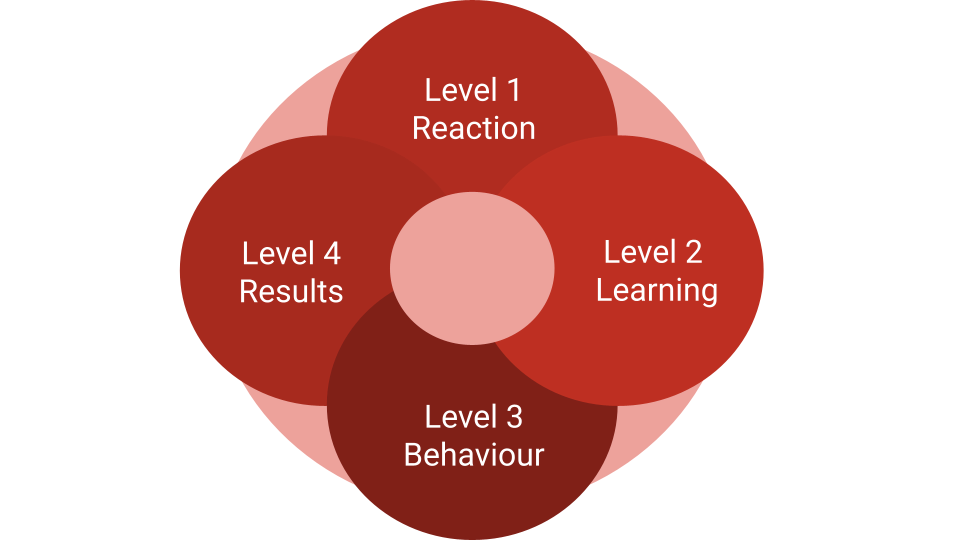For anyone involved in apprenticeship delivery, measuring the effectiveness of learning is paramount to the success of the apprentice, the employer, and the training provider. One way providers can measure this effectiveness is by using Kirkpatrick’s four-level evaluation model.
Understanding the Kirkpatrick Model
The Kirkpatrick Model, developed by Professor Emeritus Donald Kirkpatrick, is a four-level training evaluation model providing a comprehensive method for objectively analysing the impact of training. The model was initially published in 1959 and has undergone subsequent updates, most notably in 2016 when James and Wendy Kayser Kirkpatrick revised and clarified the original theory, introducing the ‘New World Kirkpatrick Model’. The model emphasises that training is relevant to everyday jobs, a paramount factor in apprenticeship programmes.
The four levels of the Kirkpatrick Model include Reaction, Learning, Behaviour, and Results, each representing a more precise measure of a training programme’s effectiveness.
Level 1: Reaction
The initial level assesses how apprentices react to the training. It’s essential to gauge their engagement, contributions, and response to the training. This feedback can help refine future apprenticeship programmes by identifying essential topics that may have been overlooked.
Questions to consider at this stage might include:
- Did you feel the training was worth your time?
- What were the biggest strengths and weaknesses of the training?
- Were the training activities engaging?
- What are the three most important things you learned from this training?
- From what you learned, what do you plan to apply for in your job?
This feedback can be measured via surveys, observations, or verbal feedback.
Level 2: Learning
The second level measures what apprentices have learned and their confidence and commitment to applying it. To gauge learning, start by identifying specific learning objectives. Before training begins, evaluate apprentices’ knowledge, skill levels, and attitudes. Then, post-training, assess their learning via interviews, verbal assessments, or tests.
Level 3: Behaviour
This level evaluates how well apprentices apply their training. However, it’s important to acknowledge that behavioural change can only occur when conditions are favourable. Apprentices can learn a lot, but organisational or team culture might hinder behavioural change. To measure behaviour effectively, you need to observe and interview apprentices and assess their ability to teach their new knowledge, skills or attitudes to other people.
Level 4: Results
The final level analyses your training results, considering outcomes beneficial for the business and the apprentices and that demonstrate a good return on investment (ROI). Modern trainers often use the Kirkpatrick model backwards, first stating the results they want to see and then developing the training most likely to deliver them.

Incorporating the OfSTED Education Inspection Framework
With all apprenticeship delivery, education and training providers need to consider OfSTED’s Education Inspection Framework. This will evaluate how effectively providers deliver the curriculum. The curriculum impact judgement looks at the provider’s success in achieving their ambitions through teaching and assessing the curriculum. By using the Kirkpatrick evaluation model, training providers can start to judge their curriculum impact as they can evaluate the effectiveness of their teaching methods and how they are reflected in the apprentice’s learning and subsequent application.
Applying the Kirkpatrick model in apprenticeship programmes can provide a clear insight into an apprentice’s journey through the course, their engagement with the curriculum, and their ability to apply their learning in a real work environment. This information can then be used to adjust the curriculum, teaching methods, or apprenticeship structure to better align with the Education Inspection Framework’s expectations and improve learning effectiveness.
Conclusion
Evaluating the effectiveness of apprenticeship learning can seem daunting. However, a structured approach like Kirkpatrick’s four-level model can simplify this process and provide valuable insights. By assessing the apprentice’s reaction, learning, behaviour, and results, training providers can gain a comprehensive understanding of the effectiveness of their programmes.
When combined with tools like learning maps and aligned with the OfSTED Education Inspection Framework, this approach can ensure the programme’s compliance with regulatory standards and enhance the learning experience for apprentices, thereby equipping them with the necessary skills and knowledge for their future careers.
Remember, the ultimate goal of any apprenticeship programme is not just to impart knowledge but to prepare the learner for the world of work. This preparation is achieved when we can confidently say that our apprentices can apply what they have learned in a real-world context, thereby proving the effectiveness of our apprenticeship programmes.
Ultimately, the success of our apprenticeships isn’t simply measured by the completion of a programme. It’s found in the growth, development, and contributions of the apprentices from whom we’ve had the privilege to guide, mentor, and learn. Because ultimately, they are our true measure of success.



